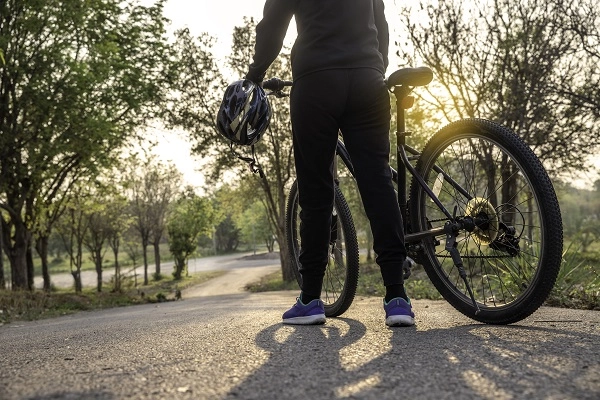Commuting without a car? Your health will thank you.


Give it a trial run. Commit to at least one week. It just might stick.
You may have contemplated the idea of turning your daily commute into an opportunity to further your fitness. You may have even taken the next step — courageously breaking with routine for one day. But maybe something went wrong, motivation was hard to sustain, and old habits returned.
Using alternative forms of transportation, such as biking, walking or bussing, can leave some extra change in your pockets at the end of the month and reduce your carbon footprint. These elements may motivate you to varying degrees, but the health benefits to be reaped when you leave four wheels in the garage are worth a second try.
Short-term, long-term and emotional benefits
What’s in it for you? “In just a short period of time you may notice an increase in energy levels, an uplifted mood, a sense of accomplishment, pain reduction, mental clarity, higher motor function, and improved hormone levels and body regulation,“ says Heart Williams, employee wellness and fitness coordinator at Salem Health.
“I often hear lack of time as the reason why many don’t engage in physical activity,” he says. “There are many ways you can incorporate physical activity into your day without disrupting your routine too much, and one of the best ways is through choosing alternative transportation.”
For long-term benefits, maintaining regular physical activity helps reduce the chances of experiencing a wide range of health problems. If done regularly, cycling, walking or even taking the bus — because this too likely requires you to walk — help improve cardiovascular health, protecting you against everything from heart disease to depression.
The emotional benefits available when we decide to bike, walk or bus are well established as well. Incorporating physical activity into your commute can reduce anxiety and stress. Choosing alternate transport will also put you in closer proximity to the world around you. We aren’t all extroverts, but who doesn’t get energized and feel good on the heels of a short, positive exchange with a stranger?
How to get started
With this in mind, it’s time to plot a walk-, bike- or bus-friendly route to work. Google Maps is an excellent resource that lets you toggle between those transportation methods and even gives time estimates for each one.
Another place to start would be asking your employer if they offer reimbursement for public transportation or insurance discounts for people who walk and bike regularly. Many employers do, and this can be an easy way to offset the cost of a new pair of walking shoes or a beginner-friendly bike.
There are many health-related arguments for finding a new way to go to work. So give it a trial run. Commit to at least one week. It just might stick.
And you will be healthier for it.
Resources
Carpool: Valley Vanpool
Bike share: Ride Salem
Motivation:
- Bike More Challenge (compete with other organizations when logging miles biking to work)
- Just Walk Salem (walk with friends and neighbors)